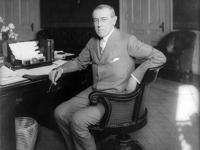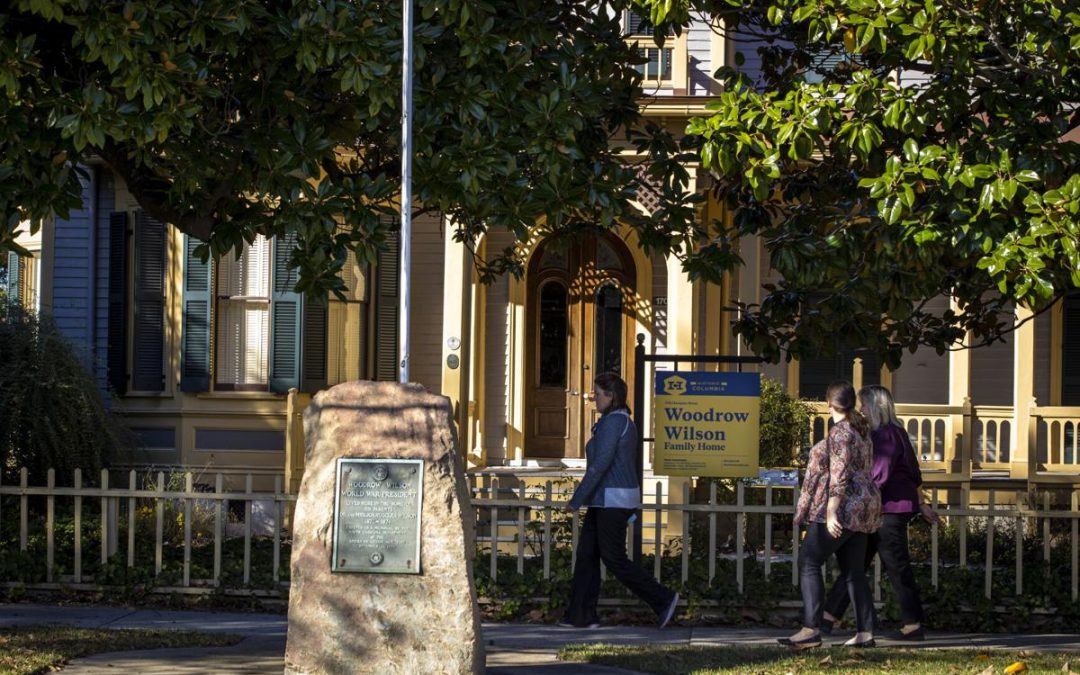SOUTH CAROLINA: Woodrow Wilson Home in Columbia Getting New Name, Mission
COLUMBIA — Caretakers of Woodrow Wilson’s teenage home have changed its name in an effort to more fully capture the racially complex history surrounding America’s 28th president.
The Woodrow Wilson Family Home is now known as The Museum of Reconstruction Era at the Woodrow Wilson Home, a revised moniker officials say more accurately reflects not only its contents, but the tumultuous era in which Wilson grew up.
“This shift in title does not erase the site’s history,” Historic Columbia member Dawn Mills-Campbell told Richland County Council in October.
“It gives Historic Columbia and Richland County a more forward-facing role in addressing the ongoing dialogue around the importance of the Reconstruction era to current events,” she added.
Historic Columbia acquired the property in 2014 and quickly added elements that brought a more rounded view of Wilson’s racial views to light. That includes his 1913 order to segregate the federal workforce and converting the site into one of America’s only museums on Reconstruction.
Council members unanimously backed Historic Columbia’s proposal, partly in honor of Chip Jackson, the late councilman who championed the idea.
“This is about six to eight years too late in its coming of age,” Councilman Jim Manning said.
Wilson lived in the Columbia home from 1871 to 1875 during his teenage years under Reconstruction, a period after the Civil War when the federal government controlled former Confederate states, and freed Blacks won property and voting rights.

Artifacts include his birthing bed and a reproduction of his school-age shorthand.
Other pieces reflect South Carolina’s own post-Civil War upheaval. There’s a shotgun fired by a member of the Red Shirts, a militia that intimidated and killed Black Republicans, including a state senator, to keep them from voting in the 1876 gubernatorial election of Wade Hampton.
Hampton’s victory meant the end of Reconstructionist policies in the Palmetto State.
As president, Wilson segregated the federal workforce and was sympathetic to the Ku Klux Klan. He also won the Nobel Peace Prize in 1919 as an architect of the League of Nations, the world’s first international diplomatic group.
Campbell said the name change gives visitors a clearer idea of what to expect when they tour the 1705 Hampton St. site, which was added to the National Register of Historic Places in 1972.
“The primary focus of the site is the Reconstruction period,” Campbell said. Historic Columbia wanted to “be transparent and direct about the visitor experience at the site.”
Richland County Councilwoman Joyce Dickerson, who is Black, said she avoided the landmark until now because of its emphasis on Wilson’s formative years, rather than the era that helped shape his views.
“I had a serious problem with that and I don’t think I ever went there because of the name,” she said. “Maybe I’ll come down and visit now,” she said.
–postandcourier.com



